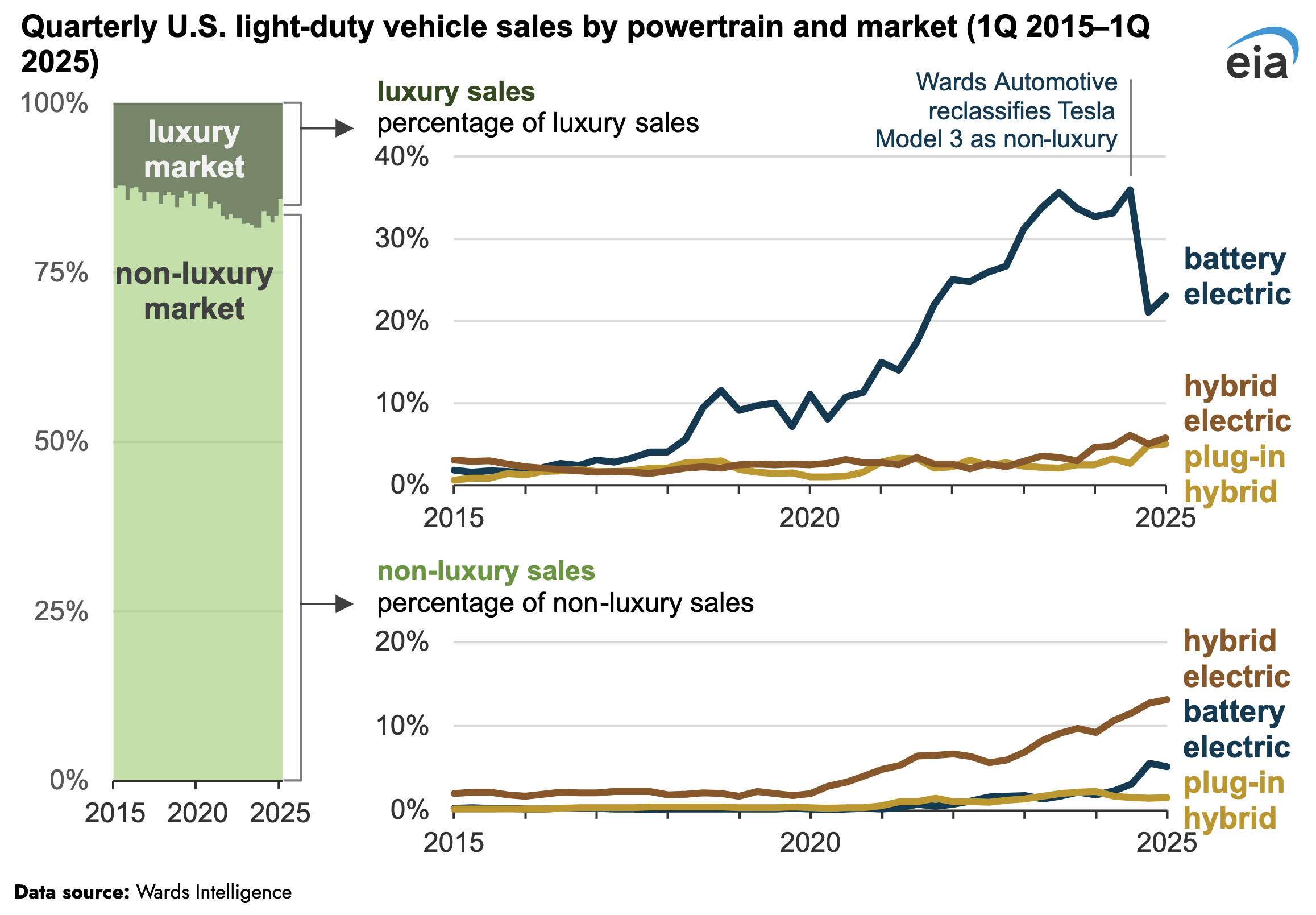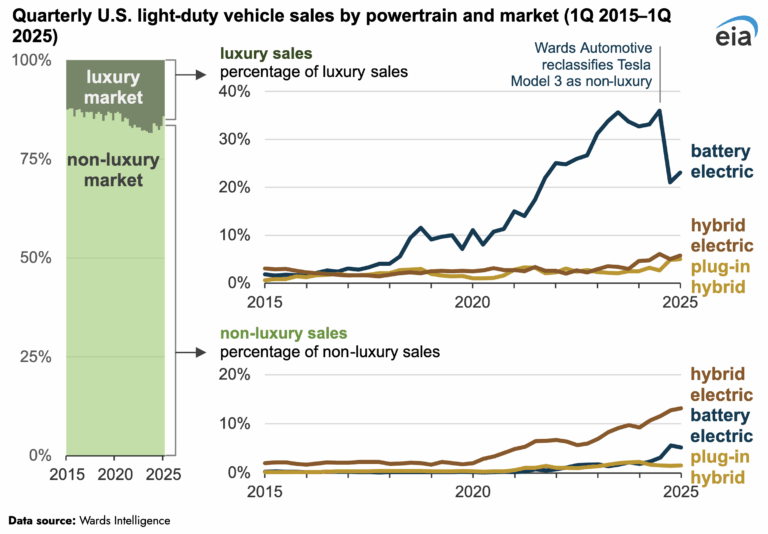Shift in US Automotive Market: Hybrids Gain Ground While Electric Vehicle Sales Plateau
In the first quarter of 2025, about 22% of light-duty vehicles sold in the United States were hybrid, battery electric, or plug-in hybrid vehicles, representing an increase from approximately 18% in the same period of 2024. According to estimates from Wards Intelligence, hybrid electric vehicles have continued to gain market share, while battery electric vehicles and plug-in hybrid vehicles have remained relatively flat.

The slowdown in electric vehicle sales was primarily driven by declining sales of certain battery electric models such as the Honda Prologue, Chevrolet Equinox, and Tesla Model Y. However, these declines were partially offset by increased sales of other battery electric models like the Volkswagen ID.4 and Toyota bZ4X. Notably, battery electric vehicle sales are more prevalent in the luxury vehicle market, which accounted for 14% of the total light-duty vehicle market in the first quarter of 2025 – the lowest share since mid-2020.
Electric vehicles made up 23% of total luxury sales in the first quarter of 2025, a significant drop from the over one-third share they commanded in 2023 and 2024. This change was partly due to Wards reclassifying the Tesla Model 3 as non-luxury in late 2024. The average transaction prices for battery electric vehicles remained persistently higher than the overall market average. In March 2025, the average transaction price for battery electric vehicles was $59,200, compared to $47,500 for all new vehicles, representing a 25% price difference – the highest since April 2023.
Despite the growing sales share of electric vehicles, they still constitute a small percentage of the total light-duty vehicle fleet on US roads. According to data from S&P Global, in 2023, electric vehicles accounted for less than 2% of all registered light-duty vehicles in the United States. The US Energy Information Administration maintains annual data series on various types of light-duty vehicles, including battery electric, plug-in hybrid, and hydrogen fuel cell electric vehicles.
The different types of vehicles have distinct impacts on the broader energy sector. Battery electric vehicles and plug-in hybrid vehicles can consume electricity from various sources, including the grid, thereby affecting electricity demand. In contrast, hybrid electric vehicles, which do not have plugs, do not directly impact grid-delivered electricity demand.
As the US automotive market continues to evolve, understanding these trends is crucial for analyzing their implications on the energy sector and transportation landscape.



